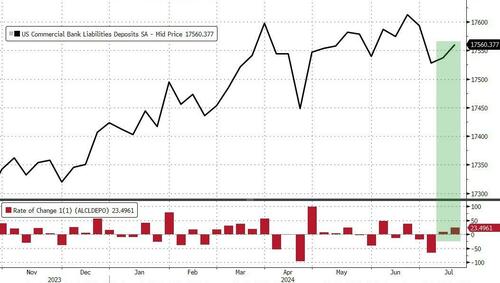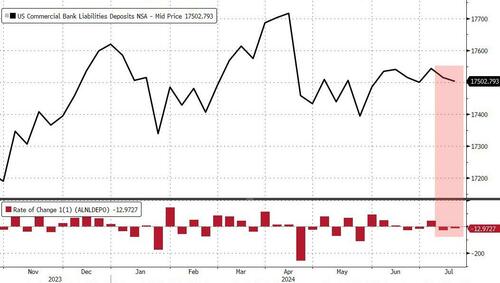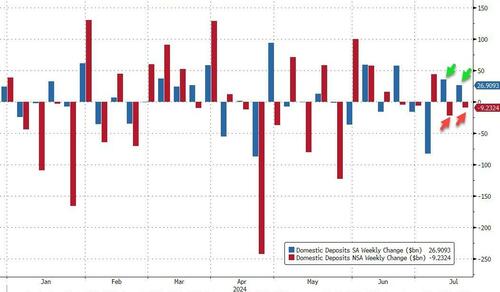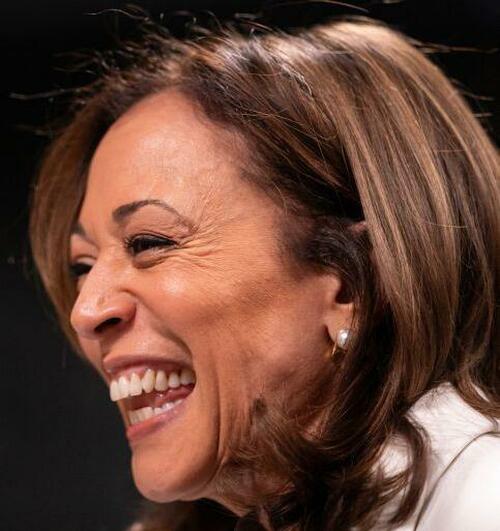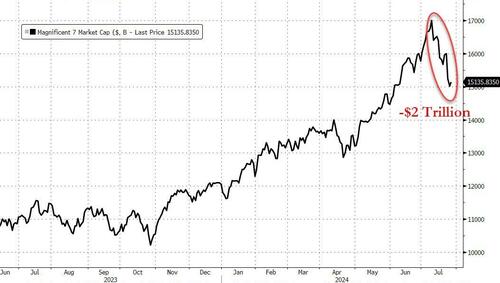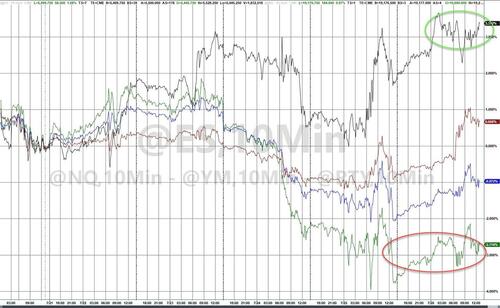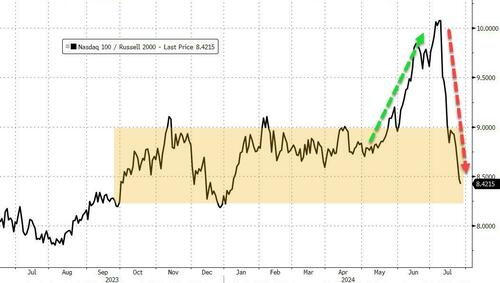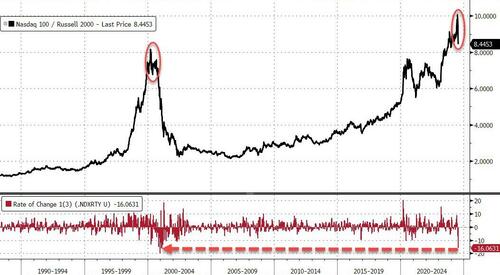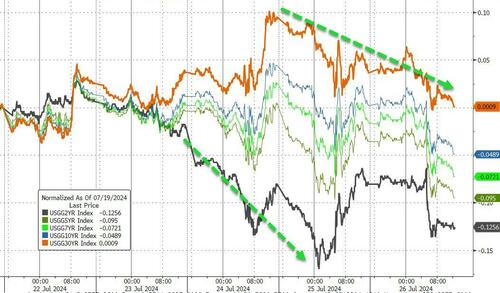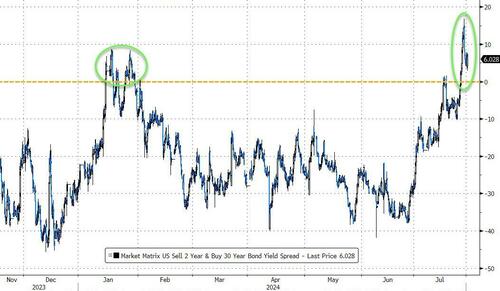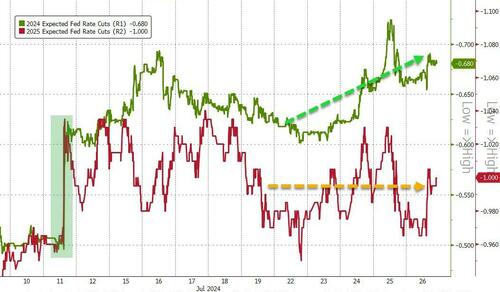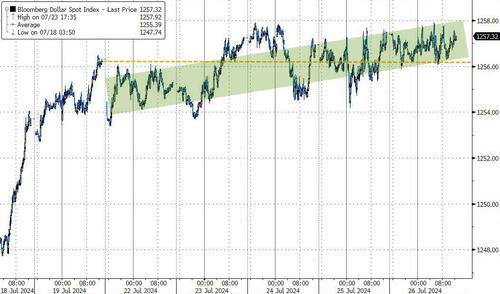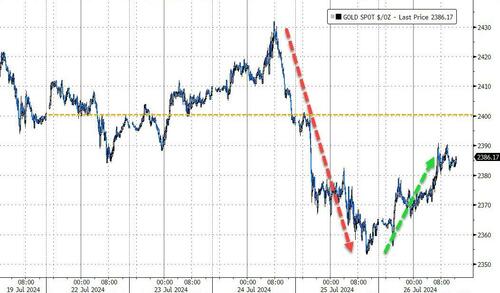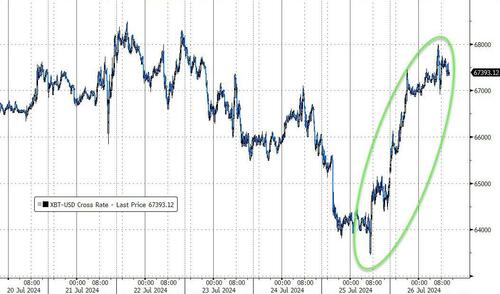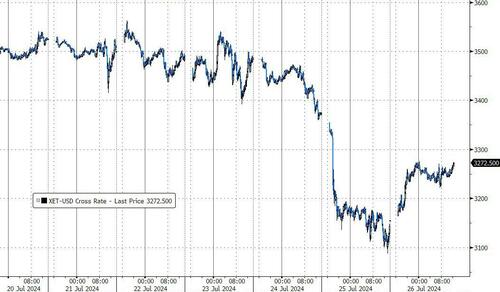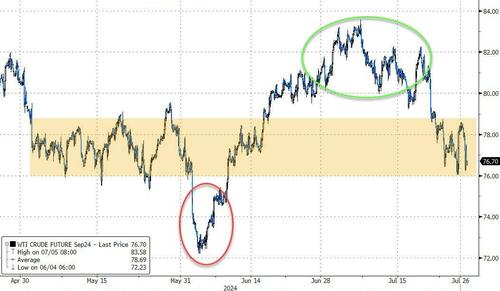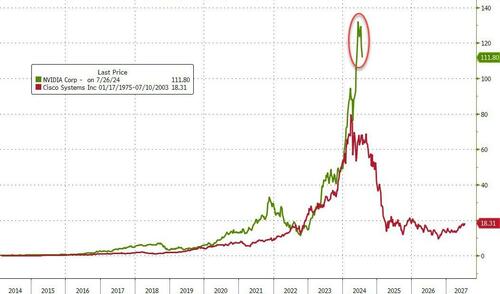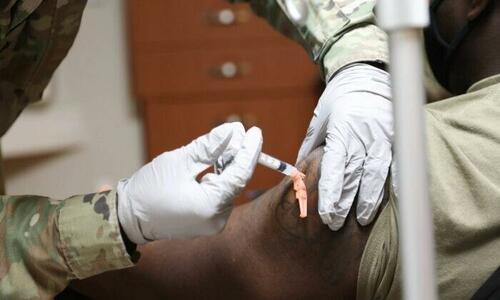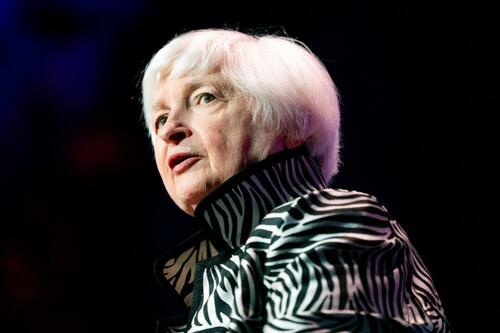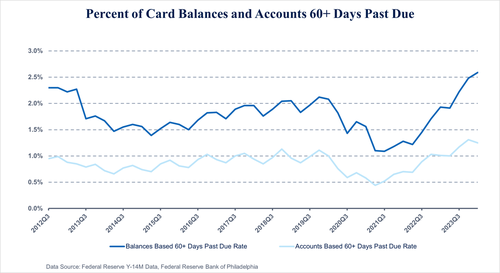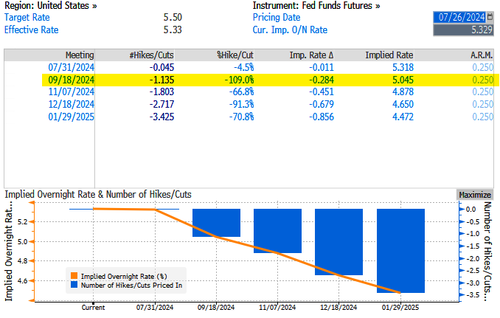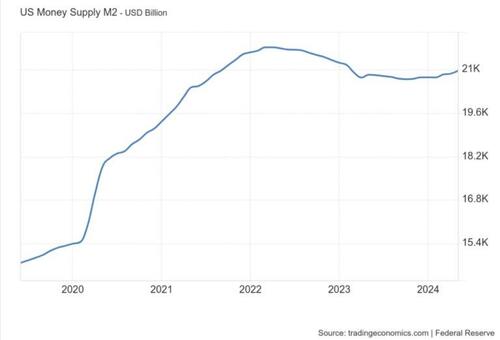Authored by Richard Truesdell and Keith Lehmann via American Greatness,
Is Kamala Harris the quintessential DEI hire?
It’s a legitimate question, given that Joe Biden made it clear during his 2020 election-year campaign that he would only consider a black woman for his VP slot. As president, he also claimed that the choice of Supreme Court Justice replacement for Stephen Breyer would be limited to a black woman.
Not even the most qualified black woman, just someone possessing dark skin and lady parts.

Biden could have simply told the country that he was going to choose the most qualified person for either position.
Instead, he said that his choice was going to be based primarily on skin color and gender.
What has this wrought? Let us tell you, it has positioned the capabilities of otherwise well-qualified people into the corner of racial and sex bias, regardless of intentions. Of course, maybe that was the intention all along.
You cannot convince anyone with even moderate powers of observation that this is not happening. Joe Biden and now Kamala Harris, along with their Democrat power operators, place intrinsic qualities such as skin color, gender, and sexual preference over meritocracy in assigning important roles in government cabinet positions, committee assignments, and security operations.
We have seen the result, and it isn’t pretty.
A former and potential future president was less than an inch away from having his brains blown out of his skull on live television. In a testimony before the House of Representatives on Monday, the head of the Secret Service, Kimberly Cheatle, with the expressed responsibility of protecting presidential contenders from harm during a campaign, claims that she tried her best but admitted the task was just too much. That implies just about everything toxic about DEI. She has subsequently resigned, much to the relief of everyone.
Let’s explore DEI, which is diversity, equity, and inclusion.
Diversity, when implemented by force, is the purposeful dilution of staffing that makes a company or government consider immutable qualities that have nothing to do with capability. At woke companies and government agencies, this so-called diversity has nothing to do with the job at hand. Diversity is heralded as a “strength.” Well, our military has failed miserably for over thirty years using this attribute, losing Afghanistan, losing in Ukraine, and for the last three years, losing on our southern border. We are witnessing a clear and rapid deterioration of our infrastructure, from our airline transportation to our local policing, all due to racial and gender quotas.
Next is equity. This is a term previously understood as ownership, as in “home equity.” An asset you actually own, such as a bond or stock certificate. This term has been essentially co-opted to now mean “equal outcome.” This is an obtuse implication that equates “fairness” with “justice.” It is another divisive tool in the radical arsenal that is intended to confuse, obfuscate, and hide the real objective here, which is to install fringe ideas and intentions that are alien to a majority of the population.
Then we have inclusion. But what is so-called inclusion? It means nothing more than the exclusion of straight, white, Judeo-Christian males. They are today’s most abused, discriminated against, slandered, vilified, and demonized demographic. Brought upon by fad beliefs, promoted by Democrats and almost the entire mainstream media, any failure in society is put upon the feet of men who happen to be white and hold traditional Judeo-Christian values. This is a toxic brew of envy and hatred toward fellow Americans that has taken hold in deeply progressive circles on the left, mostly among affluent single white women but has been touted by the legacy media as yet another club to wield against traditional meritocracy.
A DEI hire will always be stained with the notion that they “Didn’t Earn It” among fellow workers, regardless of their true capabilities. This was hammered home last year when recently appointed Harvard President Claudine Gay was called to testify on anti-Semitism on college and university campuses.
In a performance that previewed Cheatle’s testimony 10 months later, Gay issued a weak apology, which was roundly criticized in most quarters. Yet it was not enough to stop calls for her to step down. Even though 700 of Harvard’s 2,452 faculty members signed a letter opposing calls for Gay to be removed as university president, she resigned.
And soon after she stepped down, it was revealed that she plagiarized her academic work, causing a review by the Harvard Corporation. Even after her resignation, Harvard said the review found “a few instances of inadequate citation” and “duplicative language without appropriate attribution” in her work, but “no violation of Harvard’s standards for research misconduct.”
If a Harvard student turned in a master’s thesis or doctoral dissertation using the criteria used to whitewash Gay’s scholarship, he or she would likely fail.
This is the true cost of DEI.
Kamala Harris represents DEI at its worst.
We have gotten to the point where merit has been sacrificed on the altar of DEI. It places race and sex in place of merit and it costs America every day. We have to look no further than the current Democrat front-runner for the presidency, Kamala Harris, whose early career advancements were facilitated through sordid affairs and race-based, gender-based favoritism.
We are already seeing on outlets like MSNBC and CNN that whenever Harris’ relationship with powerful California Democrat Willie Brown at the start of her political career is brought up, or that she was having an affair with a married man almost 30 years her senior, you’ll be branded as racist for doing so. (Remember, these are the same outlets that have had no issue with using these similar smears when describing Donald Trump’s sex life, especially during his recent hush money charade trial in New York.) And we would be remiss not to mention her relationship with TV talk show host Montel Williams back in 2001. There’s a term for this; it’s called slut-shaming. Indulge in it at your peril of being branded a sexist. On Wednesday, Saagar Engetti discussed the topic of slut-shaming on his Breaking Points podcast and walked on eggshells as he did. (While you’re watching, watch Krystal Ball gaslighting her Democrat audience and followers. It’s hysterical.)
To get an idea of how Harris’ past relationships have been scrubbed, just take a look at her Wikipedia page. There, under personal life prior to her 2014 marriage to First Gentleman Doug Emhoff, you will find just this: “In the 1990s, Harris dated Speaker of the California Assembly Willie Brown. In 2001, Harris had a brief dating relationship with talk show host Montel Williams.“ That’s it. So if you need any proof of the inherent leftist bias of Wikipedia and its profiles, look no further.
Then there’s the rampant and rank hypocrisy of her stand on drug use as California’s Attorney General. She had no problem imposing lengthy jail terms on pot users, including many young black men, as she tried to show her “tough on crime” stance. Later, we find her laughing and boasting about her own use of “recreational drugs” on this cringey exchange on the Charlamagne tha God podcast. The Trump campaign should run this clip in heavy rotation in the fall.
Moving on to her term as vice president, there are her failures as the Border Czar. Facilitated by the mainstream media, she’s walking that back, saying that she was only fostering diplomatic relationships with Central American countries like Guatemala to get at the root causes of the immigration crisis. How stupid do they think we are? That none of us have access to the internet and that we don’t know how to use Google? That Biden didn’t appoint her in 2021 as the Border Czar?
On Wednesday, as the President of the Senate and the presumptive Democrat nominee for president, she should have been seated behind Prime Minister Benjamin Netanyahu during his recent address to Congress. Instead, due to a “scheduling conflict,” she spoke at a five-day conference at a previously scheduled event in Indiana, at the historically Black Zeta Phi Beta Sorority Grand Boule conference in Indianapolis. This was a clear slap at Netanyahu and Israel, the only true democracy in the Middle East.
But Harris wasn’t the only cowardly Democrat to boycott Netanyahu’s speech. Others included Senate president pro tempore, Washington Senator Patty Murray, who was called to replace Harris. She declined. Other Democrats declined before retiring. Maryland Senator Ben Cardin, an Orthodox Jew who is retiring, stepped up. The whole process reeks of barely concealed anti-Semitism. (It should be noted that almost half of Democrat senators did not attend the speech—another slap at our most important Middle Eastern ally.)
Harris is a great example of how Democrats now choose their candidates and, more importantly, their leaders. Because DEI is so ingrained in Democrat ideology and policy, their entire world is influenced by a person’s immutable characteristics that cannot be changed, which is now the mantra of Democrats. Harris’s failure as Biden’s Border Czar is now being magically erased, Soviet-style, by Democrats and its handmaidens in the mainstream media. It is a case of media gaslighting that will be studied by media and political analysts in the years to come.
By the way, have you noticed how hysterical the Democrats and media get when anyone refers to Harris as a DEI hire? How they claim it’s racist and sexist to make such a statement? Why is this the case?
It’s because it’s true. It is racist and sexist. No, not pointing it out, but the simple fact that Harris was chosen only on the basis of her skin color and being a woman. Anyone can see this, but we’re expected to normalize this racism and sexism because it’s “the good kind.” Another case of media gaslighting.
Racist and sexist gaslighting is what we can expect from Democrats and the media in the next 100 days leading up to November 5. Everything previously thrown at Trump has failed. They will stop at nothing to prop up this DEI hire to drag her into the White House next January, just like they did with Biden in 2020. The whole world is watching with stunning disbelief at how far this incumbent Democrat administration and their enablers in the legacy media will go to foist their loser ideas on the public.
It is up to American patriots to make sure they fail miserably.

